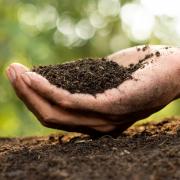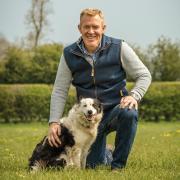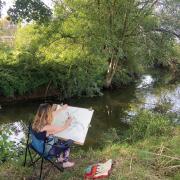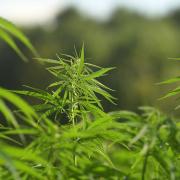Life in the WIs with GFWI county chairman Janice Cole
Our Federation logo features a sheep; it represents the Cotswold breed – or Cotswold Lion as it is commonly known – a breed known for the quality of its wool. I also have a needlefelt picture of the sheep on my office wall.
A large part of Gloucestershire is in the Cotswolds, so the sheep is very appropriate, and it is dear to us. The hills and valleys are all well suited to sheep farming, and in the past the animals would have been much more numerous. The wealth of the area, the villages, churches, and estates were nearly all connected with sheep and its wool. It was not just the farming that was important, but the industries dependent on the wool – in the Stroud valleys in particular – have a history of weaving and dyeing. With the development of the Merino breed in Australia, the Cotswold wool industry suffered a decline in importance but it was still of some economic value.

However, now wool is almost a liability. It is essential for the health of any sheep that they are shorn annually – this of course is at a cost to the farmer – and currently they are unable to recoup the cost as most of the wool is simply wasted. Wool clothing was for hundreds of years a staple for the people of this country, but this is no longer the case. The hobby of knitting has seen a resurgence, but it is nearly all acrylic yarn that is used. The extra care that it takes to wash wool is a discouragement in the modern world. But, with the high thermal value of wool and high heating costs, it may get used more.
Its high thermal value makes wool an excellent insulator. It can be used to preserve food during transport when used in packaging, whilst wall cavity and roof insulation can be wool based. These uses are of particular value when considering climate change and saving the environment, as wool is of course biodegradable when disposed of. The same can be said about the use of wool in home furnishing and bedding.
But wool is not just of use to humans within the home and on their backs; in the garden it can be used as a mulch and slug deterrent. A great boon for those wishing to grow their own food or wanting their plants to look their best. It can also be used in compost, and garden centres are now stocking wool-based compost in various forms. This has a double effect of helping the farmers by making use of wool that would otherwise be wasted, but also in protecting our peat bogs, which are extremely important in preserving the environment against climate change.
I have just discovered that the Royal Agricultural University, based in Cirencester, is researching the use of wool in the marine environment. Wool makes strong rope which can be used in the fishing industry for nets and also for attaching to lobster pots, etc. There are several advantages to using wool in this way; it does not pollute the environment when manufactured and, should it be lost in the ocean, it will biodegrade and be less hazardous to marine animals. But more than that, it also provides a habitat for marine life – arthropods, algae, molluscs and small fish etc. – an extra bonus. I sincerely hope the researchers are successful in their promotion of wool rope.
I know this will please many of our members who have been campaigning against the underuse of wool and its replacement with artificial fibres, which are contributing to waste and damaging the environment, for many years. On the fun side, I also note that the delightful Shaun the Sheep has made his way into outer space!
Happy New Year to everyone, and here’s to much more recycling.
WI House, Brunswick Square, Gloucester, tel: 01452 523966, thewi.org.uk



























